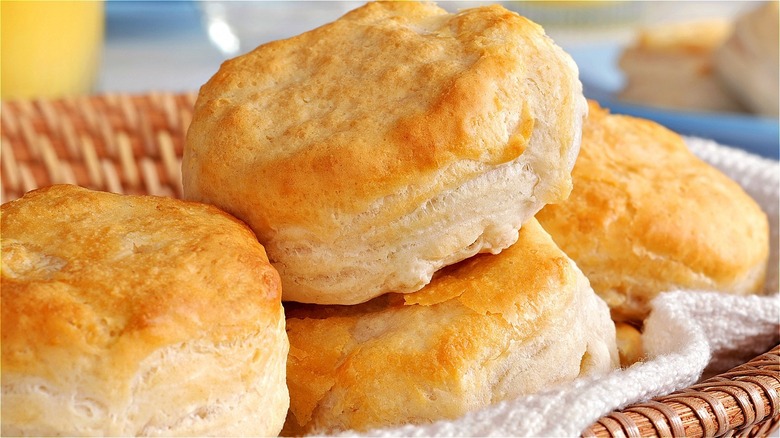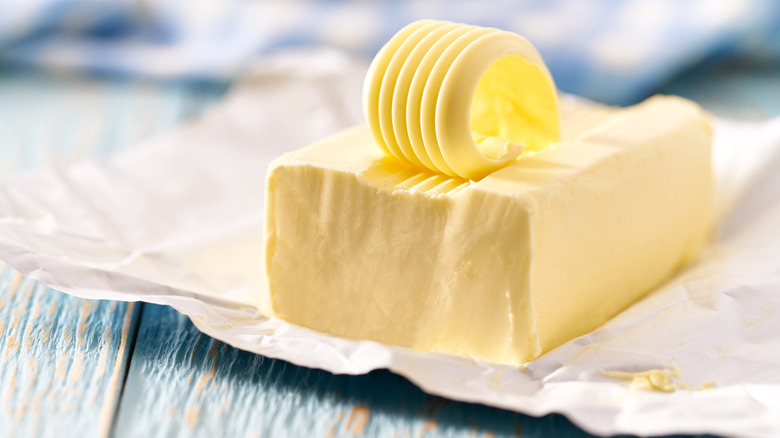What You Should Do If Your Biscuits Are Floury
Biscuits typically require very few ingredients (we even have a biscuit recipe that calls for just three) and are fairly straightforward to make. Yet, it can seem nearly impossible to master the perfect biscuit because there are so many factors that can go wrong.
The butter that gives biscuits their flavor and richness is often the biggest stumbling block. If you try to cut in super-sized butter chunks, you likely won't be able to incorporate it evenly, leaving greasy swimming pools of butter in certain areas of your cooked biscuits while others remain dry. Alternatively, if your butter pieces are so tiny they're blending in seamlessly with the grains of flour, there's no way they'll stay chilled in the mixing process, affecting the texture of your biscuits. Not to mention, if you overmix your batter in an attempt to get the butter perfectly distributed, you'll end up with dense, dry, unappetizing hockey pucks rather than fluffy, pillowy bits of heaven.
The answer is to mix an absolutely minimal amount so that the butter stays chilled and you don't risk overdeveloping the gluten in your dough, right? Well, not exactly. Anyone who has ever bitten into a biscuit that tastes as though they accidentally dropped it on a work surface, puffs of flour bursting in their mouth rather than flavorful pockets of butter, knows that it's very possible to undermix your biscuits. Luckily, there's an easy solution — and you can try it with whatever your go-to biscuit recipe is.
Grating butter is a great idea
There's no set-in-stone rule for how long to adequately mix your biscuit dough (although the Southern Living Test Kitchen swears that 15 rotations around the bowl should do the trick). That's why so many recipes include the cryptic direction that you should simply mix your ingredients until the dough comes together or until combined. However, there's one easy switch that will level up your biscuit-making technique and help you achieve the perfect biscuits, every time — and it calls for a kitchen tool you probably already have on hand.
The butter in your biscuit dough needs to be well incorporated into your dry ingredients because all those tiny pieces of butter release steam while the biscuits are cooking, which is the secret to the ideal biscuit texture. In order to ensure you're not undermixing your dough and ending up with those unappetizing bursts of flour, you just need to change the way you incorporate your butter. Rather than dicing your butter into small cubes that you then cut into your dry mixture, grate your frozen butter with a box grater before combining your ingredients. Yes, the exact same way you'd grate a block of cheese.
This accomplishes two important goals — your butter will stay properly chilled, and you won't risk overmixing your dough, leaving you with tender, mouthwateringly-flaky biscuits.

